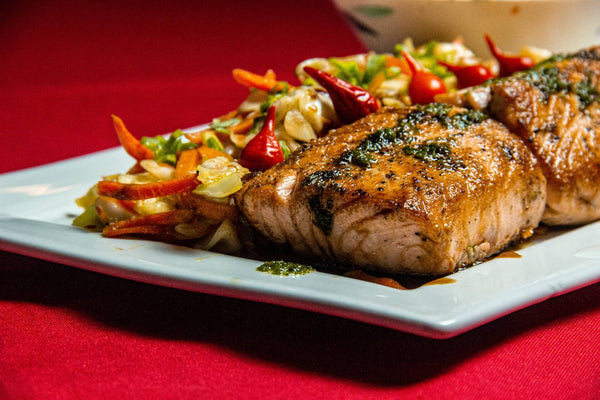How to Tell if a Salmon is Cooked Perfectly
Updated on Mar 20, 2023
Tired of serving up undercooked or overcooked salmon that's either raw or so dry that it makes you reach for your drink after every bite? Fear not, my seafood-loving friends! We've put together an easy guide on how to tell if salmon is cooked perfectly. With our expert tips and tricks, you'll be able to cook up deliciously moist and flavorful salmon dishes every time, whether you're grilling, baking, or pan-searing! So get ready to become a salmon-cooking superstar. and wow your dinner guests with perfectly cooked salmon that's sure to make a splash!
How to Tell if a Salmon is Cooked Perfectly
There are several ways to tell if a salmon is cooked. Here are some methods:
Disclaimer: Keep in mind that the cooking time and temperature can vary depending on the thickness of the salmon fillet or steak, so it's important to monitor the fish closely while cooking to ensure that it is cooked to your liking. Additionally, cooking methods like grilling, broiling, baking, and poaching may all produce slightly different results.
Color
To tell if salmon is cooked by color, you can look for the following signs:
Color: Cooked salmon should be opaque and have a pink or orange color, depending on the species. The flesh should no longer be translucent or raw-looking. If the salmon still looks translucent, it needs more time to cook. If it looks white, it may be overcooked.
Separation: As salmon cooks, the flakes of flesh will begin to separate slightly. Cooked salmon should be flaky but still moist. If the salmon appears mushy or falls apart, it is likely overcooked.
Firmness: When you press down gently on the flesh with a fork or your finger, it should feel slightly resistant but still give way easily. Cooked salmon should be firm but still moist. If the salmon is still hard or resists your fork, it needs more time to cook. If it is dry, it may be overcooked.
To check the color of the salmon, you can use a fork to gently pull apart the flesh in the thickest part of the fillet or steak. The flesh should be opaque, flaky, and moist. If it is still translucent, it needs more time to cook. If it is dry or appears white, it may be overcooked.
Texture
To tell if salmon is cooked by texture, you can look for the following signs:
Firmness: Cooked salmon should be firm but still moist. When you press down gently on the flesh with a fork or your finger, it should feel slightly resistant but still give way easily. If the salmon is still hard or resists your fork, it needs more time to cook. If it is mushy or falls apart, it may be overcooked.
Flake: As salmon cooks, the flakes of flesh will begin to separate slightly. Cooked salmon should be flaky but still moist. If the flesh is still stuck together or appears compressed, it needs more time to cook. If it appears dry or overcooked, it may be too flaky.
Juiciness: When you take a bite of cooked salmon, it should still be juicy and moist. If it appears dry or has a dry mouthfeel, it may be overcooked.
To check the texture of the salmon, you can use a fork to gently pull apart the flesh in the thickest part of the fillet or steak. The flesh should be opaque, flaky, and moist. If it is still hard or appears translucent, it needs more time to cook. If it is mushy or appears overcooked, it may have been cooked for too long.
Temperature
To tell if salmon is cooked by temperature, you will need a kitchen thermometer. Follow these steps:
- Insert the thermometer: Insert the thermometer probe into the thickest part of the salmon fillet or steak, making sure that the probe reaches the center of the fish but does not touch the bone or the pan.
- Check the temperature: Once the thermometer is securely inserted, read the temperature. Cooked salmon should reach an internal temperature of 145°F (63°C), according to the USDA. If the temperature is below this, the salmon needs more time to cook. If it is higher than this, it may be overcooked.
- Wait for the temperature to stabilize: Be sure to wait a few seconds for the temperature reading to stabilize. If the temperature is still rising, wait until it stops before checking again.
Related: How to Cook Sockeye Salmon
Conclusion
There are several ways to ensure that your salmon is cooked perfectly. Checking the color, texture, and temperature can all provide valuable information about the doneness of your fish. Everyone has their own definition of ‘perfectly cooked’ so have fun with it! Tweak the recipes until you find what's perfect for you and enjoy the process! Keep in mind that cooking times and temperatures may vary based on the thickness of your fillet, so it's important to monitor your salmon closely while cooking. With these tips, you can enjoy perfectly cooked salmon every time.








